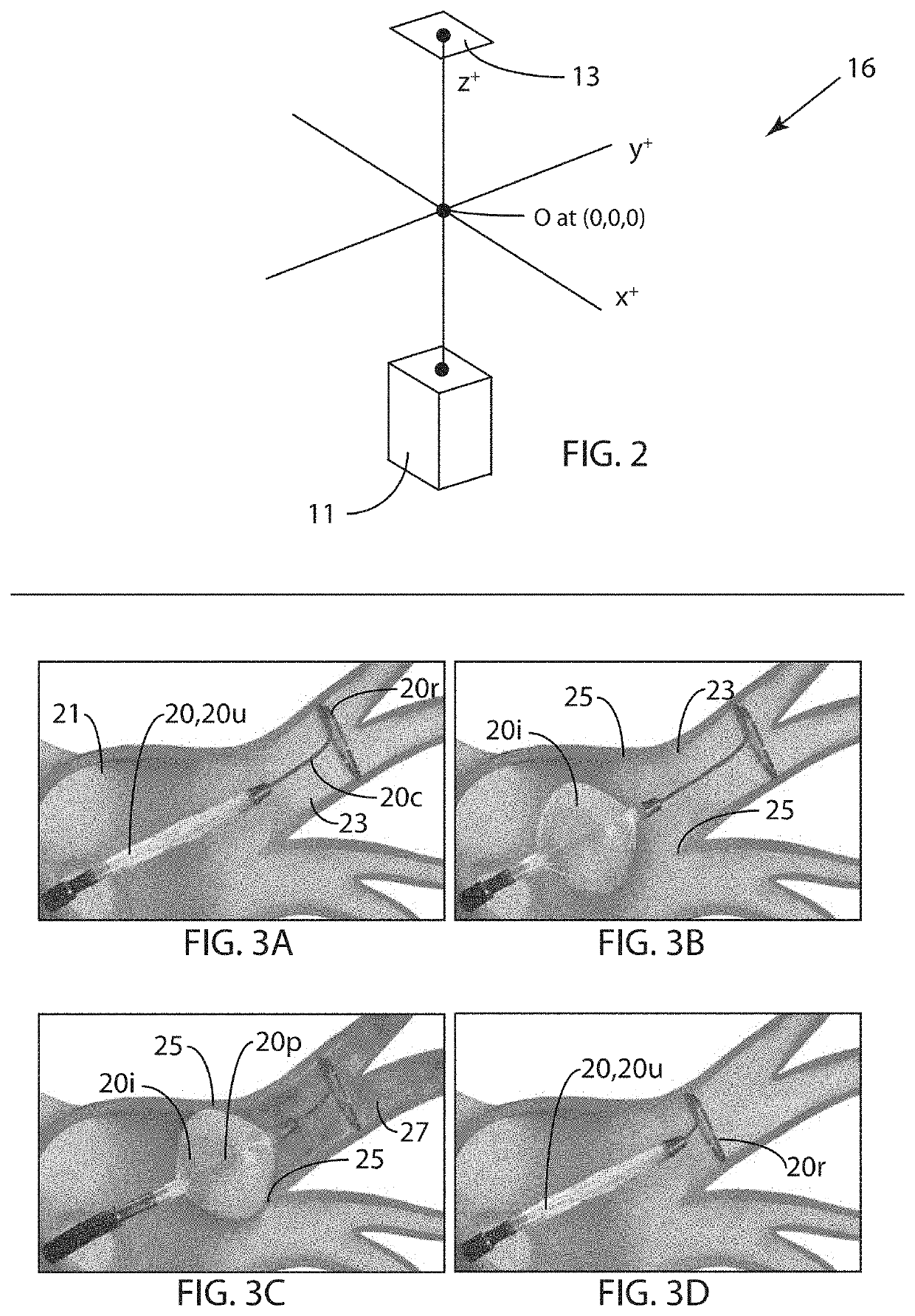Determining and displaying the 3D location and orientation of a cardiac-ablation balloon
a balloon catheter and location technology, applied in the field of medical fluoroscopy, can solve the problems that the electrodecardiologist performing such procedures has no good visualization method, and achieve the effect of improving visualization
- Summary
- Abstract
- Description
- Claims
- Application Information
AI Technical Summary
Benefits of technology
Problems solved by technology
Method used
Image
Examples
Embodiment Construction
[0056]FIG. 1 illustrates an exemplary conventional fluoroscopic system 10 used to acquire 2D fluoroscopic image data. The imaging process for conventional fluoroscopy involves an X-ray source 11 which sends an X-ray beam through a patient (not shown) on a table 12. An X-ray detector 13, which may be a flat-panel detector or an image intensifier / video camera assembly, receives the X-rays transmitted through the patient and converts the X-ray energy into an image.
[0057]X-ray source 11 and X-ray detector 13 are mounted on opposite ends of a C-arm 8. Detector 13 may perform the conversion using an X-ray detection layer that either produces light or releases electrons when stimulated by X-rays, and a light-to-electron conversion layer, e.g., photodiodes or electron collection layer, as appropriate, in which an electrical charge signal proportional to X-ray signal intensity in each picture element (pixel) is collected. Analog-to-digital conversion then produces a digital image. Whatever t...
PUM
 Login to View More
Login to View More Abstract
Description
Claims
Application Information
 Login to View More
Login to View More - R&D
- Intellectual Property
- Life Sciences
- Materials
- Tech Scout
- Unparalleled Data Quality
- Higher Quality Content
- 60% Fewer Hallucinations
Browse by: Latest US Patents, China's latest patents, Technical Efficacy Thesaurus, Application Domain, Technology Topic, Popular Technical Reports.
© 2025 PatSnap. All rights reserved.Legal|Privacy policy|Modern Slavery Act Transparency Statement|Sitemap|About US| Contact US: help@patsnap.com



